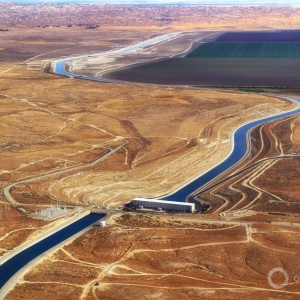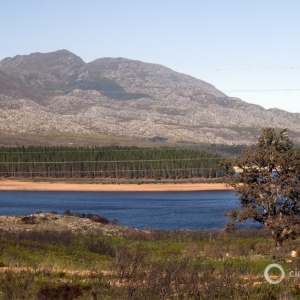Federal Water Tap, June 20: EPA Issues PFAS Warning and Troubled Colorado River Is Focus of Senate Hearing
The Rundown
- The EPA strengthens non-binding health advisories for two PFAS chemicals and issued new advisories for two others.
- The EPA appraises end-of-life plans for more than 160 coal ash ponds that could be polluting groundwater.
- The EPA also invites applications for $1 billion in PFAS response funds that will help small and disadvantaged communities address the chemicals in their water supply.
- A government watchdog investigates the federal response to harmful algal blooms.
- The EPA considers exempting certain federally financed water infrastructure projects from a requirement to use American-made products and materials.
- Federal agencies weight options for controlling cross-border sewage pollution in the Tijuana River.
And lastly, the troubled Colorado River takes center stage at a Senate drought hearing.
“It is in our authorities to act unilaterally to protect the system. And we will protect the system. But today we are pursuing a path of partnership.” — Camille Touton, commissioner of the Bureau of Reclamation, testifying before the Senate Energy and Natural Resources Committee on drought in the American West. Touton was pointed — shocking, even — in her remarks about the Colorado River. Much more conservation is needed in the next year to keep the basin’s big reservoirs from breaching critical levels. Touton said Reclamation is working with states and tribes on a consensus path forward, but “faith alone is not enough” to secure an agreement. “We need to see the work, we need to see the action.”
In context: What Happens If Glen Canyon Dam’s Power Shuts Off?
By the Numbers
2 Million to 4 Million Acre-Feet: Additional conservation in the Colorado River basin needed to protect critical reservoir levels next year. This would be the largest demand reduction ever in the basin in such a time frame. In her Senate testimony, Camille Touton said it is Reclamation’s intent, in the next 60 days, to find a way to close that gap. Expect an announcement in mid-August.
$5.5 Billion: Loans that the U.S. Environmental Protection Agency will be able to make for fiscal year 2022 through WIFIA, which provides low-interest financing for water infrastructure. Utilities can begin submitting their letters of intent in September.
News Briefs
PFAS Health Advisories
The U.S. Environmental Protection issued new warnings about the danger of PFAS chemicals to human health.
The agency substantially lowered existing health advisories for two such chemicals, PFOA and PFOS. It also posted new advisories for two additional chemicals, GenX and PFBS.
The new advisory levels for PFOA and PFOS are almost inconceivably small. So small, in fact, that laboratory methods cannot detect the chemicals in drinking water at these levels: 0.004 parts per trillion for PFOA and 0.02 parts per trillion for PFOS. The previous advisory level was 70 parts per trillion combined – more than 10,000 times higher than the new level for PFOA.
The impact of the change remains unclear. Health advisories are not an enforceable standard. They are meant as guidance for water utilities, notifying them of chemical concentrations at which health impacts. These advisories are based on a lifetime of tap water consumption.
The revised levels for PFOA and PFOS is due in large part because the chemicals inhibit vaccine response in children.
The advisory levels for GenX (10 parts per trillion) and PFBS (2,000 parts per trillion) were based on liver and thyroid effects, respectively.
Coal Ash Ponds Potentially Threatening Groundwater
E&E News reports that the EPA has a list of 166 coal ash ponds that could be polluting groundwater and are slated to be closed.
Unlined waste storage ponds are not allowed simply to close if the coal ash touches groundwater and could leach heavy metals into the water table. The ponds hold waste from coal-burning power plants.
The agency told E&E News that it is investigating the list of sites to see if they do touch groundwater and need remedial cleanup before ending operations. The sites are located in 27 states.
Studies and Reports
Harmful Algal Blooms
Federal agencies should increase monitoring of inland water bodies for harmful algal blooms and set a national goal for preventing the toxic blooms from forming, according to a government watchdog.
The Government Accountability Office report notes that the EPA and NOAA lead a federal hypoxia and harmful algal bloom working group that is the primary unit for coordinating a federal response. But the agencies have not developed a systematic national program to “understand, detect, predict, control, mitigate, and respond” to freshwater and marine blooms.
The agencies told the GAO that such a program lacks funding and staff.
Build America, Buy America Waiver Proposal
The EPA is considering exempting certain federally financed water infrastructure projects from a requirement to use American-made products and materials.
The exemption would apply to State Revolving Fund projects that submitted engineering plans and specifications before May 14, 2022. It does not waive requirements for American iron and steel.
Comments on the proposal are being accepted through June 29 and can be submitted to BABA-OW@epa.gov.
On the Radar
PFAS Response Funds
The EPA invited states to apply for funding to help small and disadvantaged communities deal with PFAS chemicals in their drinking water.
The federal infrastructure bill allocated $1 billion annually over the next five years for that purpose.
Stanching Sewage Flows in the Tijuana River
Federal agencies published a draft environmental impact statement for a plan to control sewage in the Tijuana River that originates in Mexico and flows to the U.S.
The plan has two options: basic and deluxe.
The basic version would see the U.S. participate in four cross-border sewage infrastructure improvements for which Congress has already appropriated $300 million.
The deluxe model puts additional items in the cart. These projects are included in a comprehensive plan but are not yet funded.
Public comments are being accepted through August 1. Two virtual public meetings will be held in July.
Federal Water Tap is a weekly digest spotting trends in U.S. government water policy. To get more water news, follow Circle of Blue on Twitter and sign up for our newsletter.
Brett writes about agriculture, energy, infrastructure, and the politics and economics of water in the United States. He also writes the Federal Water Tap, Circle of Blue’s weekly digest of U.S. government water news. He is the winner of two Society of Environmental Journalists reporting awards, one of the top honors in American environmental journalism: first place for explanatory reporting for a series on septic system pollution in the United States(2016) and third place for beat reporting in a small market (2014). He received the Sierra Club’s Distinguished Service Award in 2018. Brett lives in Seattle, where he hikes the mountains and bakes pies. Contact Brett Walton






Leave a Reply
Want to join the discussion?Feel free to contribute!